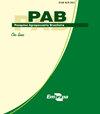2NVS translocation presence and inheritance of resistance to head blast in wheat
IF 0.7
4区 农林科学
Q3 AGRICULTURE, MULTIDISCIPLINARY
引用次数: 0
Abstract
Abstract The objective of this work was to evaluate the effect of the presence of 2NVS translocation on the inheritance of wheat resistance to head blast, in F2 segregating lines from two biparental crosses. The IPF 86766 and 'Santa Fe' genotypes were used as female parents (both 2NVS carriers), and 'BRS 404', as the common male parent (non 2NVS carrier). Using a mixture of three isolates of Pyricularia oryzae Triticum, wheat spikes and rachises were evaluated for bleaching severity at five (%BS_5dpi) and seven days post-inoculation (%BS_7dpi), as well as for the number of infection points (IPR) and pathogen sporulation (SPO). Chi-square analyses showed that segregation follows a 3:1 Mendelian hypothesis, with a major locus with a dominant allele: %BS_7dpi for IPF 86766 × 'BRS 404' and IPR for 'Santa Fe' x 'BRS 404'. Therefore, this is the first known study to show that the 2NVS translocation responsible for resistance to head blast is a major locus with a dominant allele. In a controlled environment, 'BRS 404' shows bleaching severity and SPO similar with those occurring on IPF 86766 and 'Santa Fe'.小麦穗瘟病抗性的nvs易位存在与遗传
摘要本研究旨在评价2NVS易位对两个双亲本杂交F2分离系小麦抗穗瘟病遗传的影响。用IPF 86766和‘Santa Fe’基因型作为母本(均为2NVS携带者),用‘BRS 404’基因型作为普通父本(非2NVS携带者)。利用稻瘟病菌(pyricaria oryzae Triticum) 3个分离株的混合物,对接种后5天(%BS_5dpi)和7天(%BS_7dpi)小麦穗和小麦穗的白化严重程度、侵染点(IPR)数量和病原菌孢子量(SPO)进行了评价。卡方分析表明,分离符合3:1孟德尔假设,一个主位点有一个显性等位基因:IPF 86766 בBRS 404’的%BS_7dpi和‘Santa Fe’בBRS 404’的IPR。因此,这是已知的第一个研究表明,负责头部爆炸抗性的2NVS易位是一个显性等位基因的主要位点。在受控环境下,“BRS 404”显示出与IPF 86766和“Santa Fe”类似的漂白严重程度和SPO。
本文章由计算机程序翻译,如有差异,请以英文原文为准。
求助全文
约1分钟内获得全文
求助全文
来源期刊

Pesquisa Agropecuaria Brasileira
农林科学-农业综合
CiteScore
1.20
自引率
0.00%
发文量
45
审稿时长
9-18 weeks
期刊介绍:
Pesquisa Agropecuária Brasileira – PAB – is issued monthly by Empresa Brasileira de Pesquisa Agropecuária – EMBRAPA, affiliated to Ministry of Agriculture, Livestock and Food Supply. PAB publishes original scientific-technological articles on Plant Physiology, Plant Pathology, Crop Science, Genetics, Soil Science, Food Technology and Animal Science.
Its abbreviated title is Pesq. agropec. bras., and it should be used in bibliographies, footnotes, references and bibliographic strips.
 求助内容:
求助内容: 应助结果提醒方式:
应助结果提醒方式:


